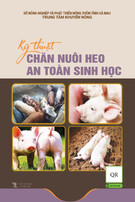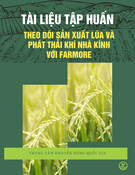
92
TẠP CHÍ KHOA HỌC VÀ CÔNG NGHỆ TRƯỜNG ĐẠI HỌC HÙNG VƯƠNG Tran Minh Hieu et al.
*Email: cd.ha@vnu.edu.vn
TẠP CHÍ KHOA HỌC VÀ CÔNG NGHỆ
TRƯỜNG ĐẠI HỌC HÙNG VƯƠNG
Tập 11, Số 1 (2025): 92 - 100
HUNG VUONG UNIVERSITY
JOURNAL OF SCIENCE AND TECHNOLOGY
Vol. 11, No. 1 (2025): 92 - 100
Email: tapchikhoahoc@hvu.edu.vn Website: www.jst.hvu.edu.vn
EVALUATION OF THE EFFECTS OF MAGNETIC FIELDS
ON THE GROWTH, DEVELOPMENT, AND QUALITY OF BEAN SPROUTS
Tran Minh Hieu1, Dong Huy Gioi2, La Viet Hong3,
Chu Thuy Duong4, Hoang Dac Hon5, Chu Duc Ha1*
1University of Engineering and Technology, Vietnam National University Hanoi, Hanoi
2Vietnam National University of Agriculture, Hanoi
3Hanoi Pedagogical University 2, Vinh Phuc
4Bac Giang Agriculture and Forestry University, Bac Giang
5Nam Chay Secondary School for Ethnic Minorities, Lao Cai
Received: 04 March 2025; Revised: 16 March 2025; Accepted: 18 March 2025
DOI: https://doi.org/10.59775/1859-3968.264
Abstract
Bean sprouts are widely consumed due to their nutritional value, but the prevalent use of chemical agents
during sprouting has raised significant food safety concerns. This study investigated the effects of a 150
mT magnetic field on germination, growth parameters, biochemical composition, and sensory quality of bean
sprouts. Results demonstrated that seeds exposed to the 150 mT magnetic field exhibited enhanced germination
rates and growth. Notably, root and shoot elongation significantly improved, and both total soluble sugars and
ash content were higher compared to the control group. Furthermore, fresh weight yield significantly increased
with magnetic field treatment. Sensory evaluation confirmed superior quality, with higher scores for sprouts
exposed to the magnetic field. These findings suggest that applying a magnetic field represents an effective,
chemical-free alternative to enhance bean sprout production and quality, addressing consumer health concerns
associated with chemical growth promoters.
Keywords: Bean sprout, magnetic field, growth, evaluation, quality.
1. Introduction
Bean sprouts, derived primarily from
mung beans (Vigna radiata), are widely
consumed as a nutrient-dense vegetable due
to their high content of vitamins, minerals,
and bioactive compounds that offer numerous
health benefits [1]. Their rapid growth cycle,
typically within a few days under optimal
conditions, makes them a highly sustainable
food source with significant economic
and nutritional importance [2]. However,
to accelerate germination and elongation
processes, many commercial producers
have increasingly resorted to the application
of exogenous plant growth regulators
(phytohormones), such as gibberellins
and cytokinins, which artificially enhance
shoot elongation and yield [3]. While these
agrochemicals effectively promote uniform
and rapid sprout growth, concerns have been
























